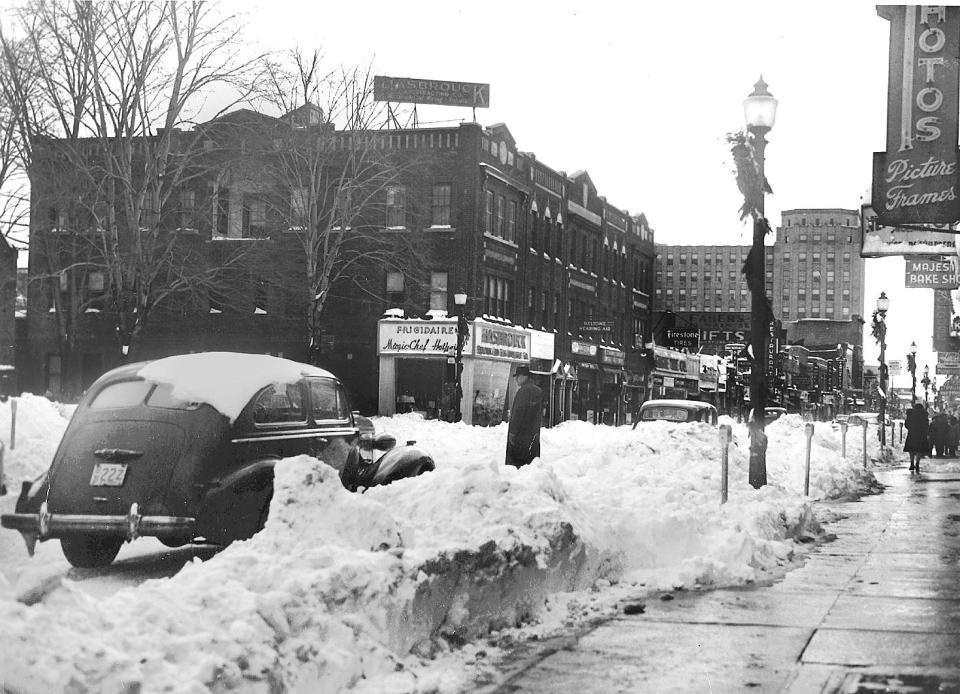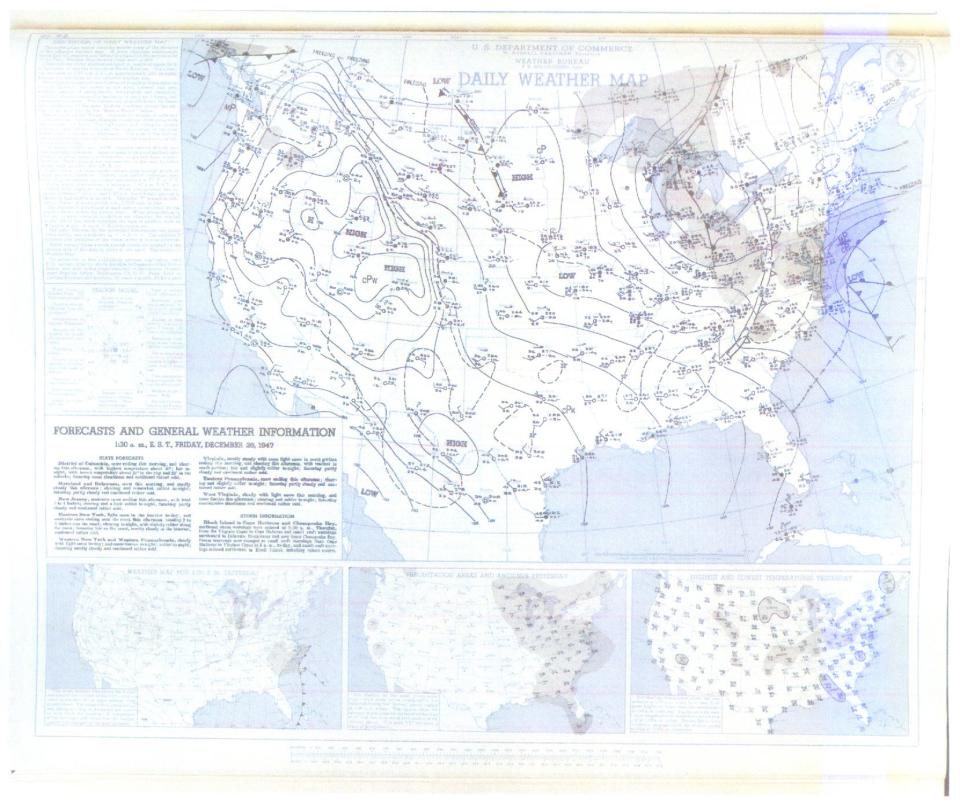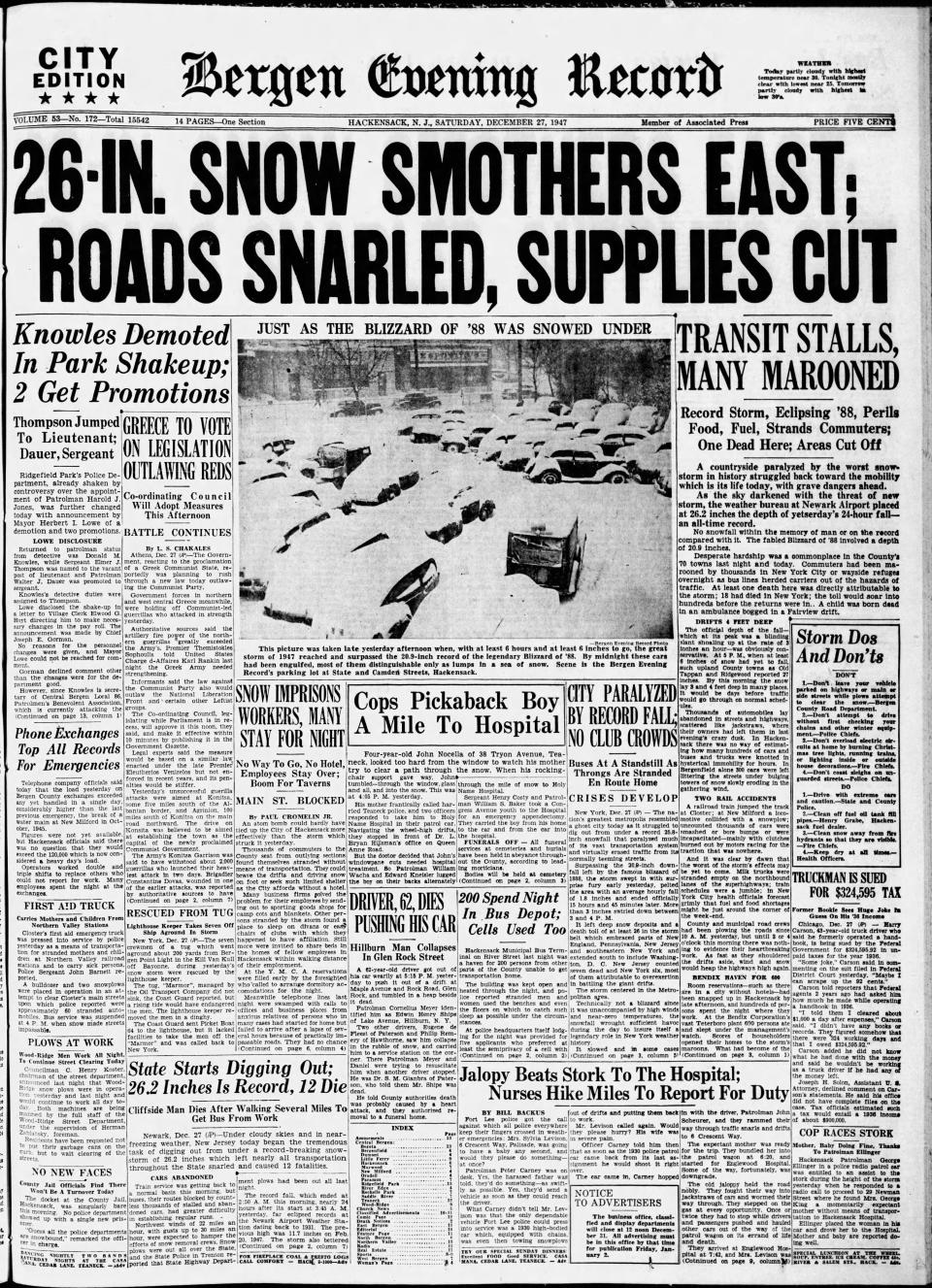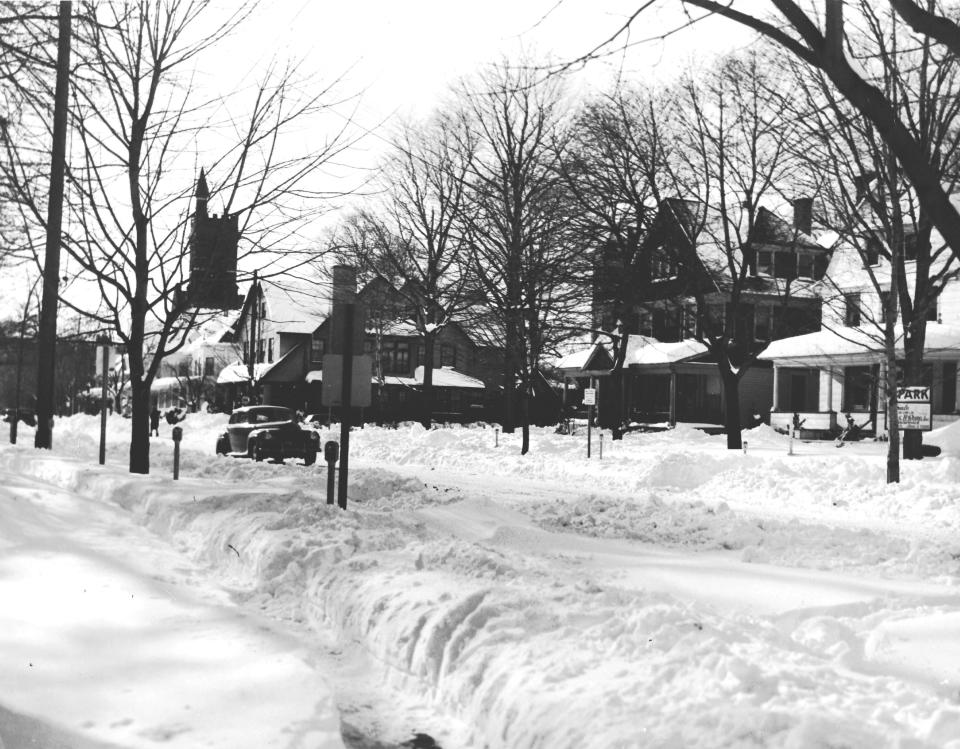A look back: Record-breaking snowstorm of 1947 still among NJ's largest
The forecasters predicted a dusting in New Jersey.
"I never saw such terrible, terrible forecasting in all my life," said Jim Witt, a New York-based meteorologist. "The day before, they said there would be no snow. I woke up with 5 inches on the ground."
Witt, who spend decades reporting for WHUD, was 10 years old on Dec. 26, 1947 when a nor'easter hit the East Coast. Few, if any, thought the storm would break records dating back to the 1870 birth of the U.S. Weather Bureau.
The only hint of significant snow The Record reported in the days before was a short blub on Christmas Eve. Lester Fishbough, the superintendent of public works in Hackensack, said he had his staff install tire chains and snow plows on their trucks after seeing a few flurries the day before.

"Although making no pretense to being a weather profit, Fishbough has been dealing with this sort of thing long enough to recognize the danger signs," The Record reported.
Far too few recognized the signs. The most severe forecasts called for snow ending that afternoon.
Already a weather enthusiast at the time, Witt said he was home from school for the holiday with his ear pinned to the radio. The forecasters couldn't keep up with the storm, he said.
"If they said we were going to get 8 inches of snow, there was already 10 inches on the ground," Witt said.
Fueled by a convergence of moist air from the Gulf Stream and cold air from the north, the storm let loose over New Jersey. Over 24 hours, 26.2 inches of snow fell at Newark Airport, more than doubling the previous record there. The 29.7 inches that fell on Long Branch holds the state's 24-hour snowfall record.

The official record for one snowstorm in New Jersey dates to 1899, when 34 inches fell in Cape May, said Bob Ziff of the North Jersey Weather Observers. However, a station in Oak Ridge reported that same total after the 1947 storm, Ziff said.
The Macopin area of West Milford reported 32 inches; Canistear Reservoir 30 inches. Paterson saw 2 feet of fresh snow.
"Paralyzing, to say the least," the storm dropped 3 or more inches of snow an hour, said Jim Eberwine, a retired National Weather Service forecaster.
With rapid intensification marked by low barometric pressure, the accumulations piled. Satellite imagery and modern models were sorely needed, Eberwine said.
Benjamin Parry, the U.S. Weather Bureau's chief meteorologist, told the Associated Press that the storm came from an area off the New England coast where there weren't any observation points. The bureau's projections, he said, were based on land observations. The tame forecasts did locals no favors.

"Thousands of automobiles lay abandoned in streets and highways, scattered like jackstraws," The Record reported. "A railroad train jumped the track at Closter; at New Milford a locomotive collided with a snowplow; uncounted thousands of cars were smashed or bore bumps or were incapacitated - mainly with clutches that were burnt out by motors racing for the traction that was nowhere."
The Asbury Park Press claimed the storm made the famed Great White Hurricane of March 1888 look like "light snow."
In Belmar, a Fischer Baking Co. tractor-trailer was split in two by a train. In Long Branch, a cop car hit a pedestrian on Broadway. In Asbury Park, three collapsed trying to trudge through the snow.
Still, the old timers said it was nothing like the Great Blizzard of 1888, Witt said.
Walter Gardner, the president of a group called "Blizzard Men of 1888," told area newspapers the day after the storm that there was "no comparison."
Augustus Post, another group member, scoffed at the application of the term blizzard, saying the temperatures were far too mild and the winds were weak. The low in 1947 was 25 degrees Fahrenheit. In 1888, it was below zero. Winds in 1947 topped out at 34 miles per hour; far less than the 84 mph reported 59 years earlier.

Some other points made by '88 advocates: No one in New York City was forced to walk across a frozen East River, find 28 horses to pull a plow over a streetcar line or send a cable to London to get a message over to Boston.
Eberwine said the scope of the worst weather in 1947 was much smaller than the 1888 storm. The 1888 blizzard affected a vast area evenly. The 1947 storm concentrated on one spot along the East Coast. Still, Eberwine said the 1947 storm doesn't get enough respect.
The 1947 storm dropped roughly 5 inches more on New York City than the 21 recorded in 1888. The total remained the highest the city had seen through the Blizzard of 1996. It was nonetheless supplanted by the massive snow storms of February 2006 (26.9 inches in Central Park) and January 2016 (27.5 inches).
This article originally appeared on NorthJersey.com: Look back: Record-breaking snowstorm of 1947 still among NJ's largest

